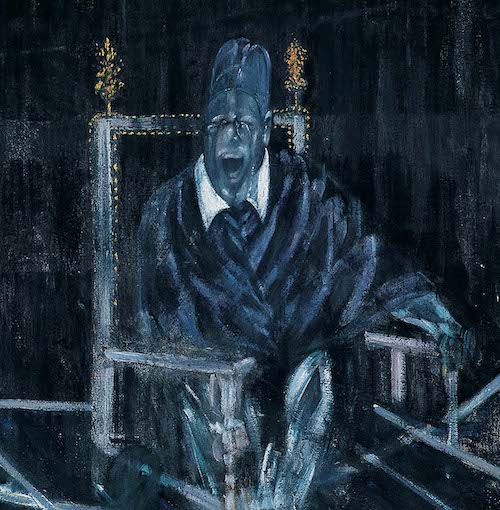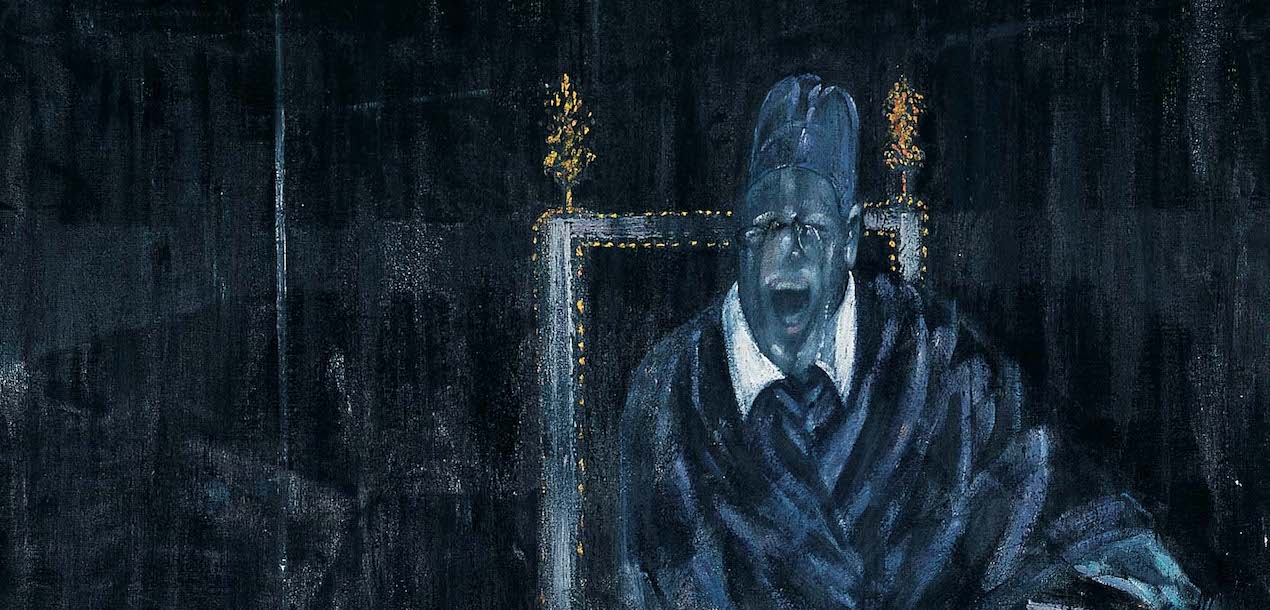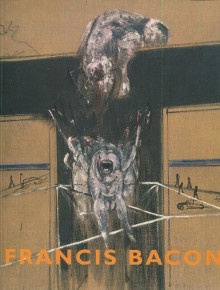En cours
A Venir
Billetterie
Collections en ligne
Actualités
Boutique
Restaurants et privatisation


A major exhibition of works by Francis Bacon entitled “The Sacred and the Profane” will be on show at the Musée Maillol in Paris from April 7th to June 30th 2004. The exhibition brings together 42 paintings (including 5 triptychs) by the great English painter from museums and private collections in Europe, Asia and the USA. Some of these works have rarely been exhibited, even in major Bacon retrospectives such as those at the Grand Palais (1971) and the Centre Georges Pompidou (1996).
Francis Bacon was, to an extreme and often perilous degree, living proof of what William Butler Yeats said: “No mind can create until it is divided in two”. In his life as in his art, Francis Bacon managed to maintain a precarious, yet lasting, balance between totally contradictory points of view.
This ambivalence is clearly evident in his work, reaching unprecedented heights in his interpretations of highly symbolic Christian motifs, notably crucifixions and popes, and in his irreverent images of people mating on the grass, isolated men screaming in cages and women pinned to their beds by a syringe in foam paint. In the process, Bacon inverts all traditional conceptions of the sacred and the profane, replacing them with his own shifting and unpredictable categories.A crucifixion might depict a piece of meat or a threatening animal, while the lustful embrace of two bodies might take on all the painful tenderness of a pietà.
The exhibition at the Musée Maillol explores the ways in which the sacred and the profane are combined in the art of Francis Bacon. It reveals some of the enigmas underlying the deeply disturbing iconography of the great English painter. It reveals how an artist as staunchly atheist as Bacon obsessively painted the crucifixion or variations on Velázquez’s portrait of Pope Innocent X (forty-five at the very least). At the same time, his uncommon capacity for transformation has enabled him to give an almost mythical dimension to the most banal of everyday scenes (a man in a room).
A major exhibition of works by Francis Bacon entitled “The Sacred and the Profane” will be on show at the Musée Maillol in Paris from April 7th to June 30th 2004. The exhibition brings together 42 paintings (including 5 triptychs) by the great English painter from museums and private collections in Europe, Asia and the USA. Some of these works have rarely been exhibited, even in major Bacon retrospectives such as those at the Grand Palais (1971) and the Centre Georges Pompidou (1996).
Francis Bacon was, to an extreme and often perilous degree, living proof of what William Butler Yeats said: “No mind can create until it is divided in two”. In his life as in his art, Francis Bacon managed to maintain a precarious, yet lasting, balance between totally contradictory points of view.
This ambivalence is clearly evident in his work, reaching unprecedented heights in his interpretations of highly symbolic Christian motifs, notably crucifixions and popes, and in his irreverent images of people mating on the grass, isolated men screaming in cages and women pinned to their beds by a syringe in foam paint. In the process, Bacon inverts all traditional conceptions of the sacred and the profane, replacing them with his own shifting and unpredictable categories.A crucifixion might depict a piece of meat or a threatening animal, while the lustful embrace of two bodies might take on all the painful tenderness of a pietà.
The exhibition at the Musée Maillol explores the ways in which the sacred and the profane are combined in the art of Francis Bacon. It reveals some of the enigmas underlying the deeply disturbing iconography of the great English painter. It reveals how an artist as staunchly atheist as Bacon obsessively painted the crucifixion or variations on Velázquez’s portrait of Pope Innocent X (forty-five at the very least). At the same time, his uncommon capacity for transformation has enabled him to give an almost mythical dimension to the most banal of everyday scenes (a man in a room).

Francis Bacon
Le Sacré et le Profane
A major exhibition of works by Francis Bacon entitled “The Sacred and the Profane” will be on show at the Musée Maillol in Paris from April 7th to June 30th 2004. The exhibition brings together 42 paintings (including 5 triptychs) by the great English painter from museums and private collections in Europe, Asia and the USA. Some of these works have rarely been exhibited, even in major Bacon retrospectives such as those at the Grand Palais (1971) and the Centre Georges Pompidou (1996).
Francis Bacon was, to an extreme and often perilous degree, living proof of what William Butler Yeats said: “No mind can create until it is divided in two”. In his life as in his art, Francis Bacon managed to maintain a precarious, yet lasting, balance between totally contradictory points of view.
This ambivalence is clearly evident in his work, reaching unprecedented heights in his interpretations of highly symbolic Christian motifs, notably crucifixions and popes, and in his irreverent images of people mating on the grass, isolated men screaming in cages and women pinned to their beds by a syringe in foam paint. In the process, Bacon inverts all traditional conceptions of the sacred and the profane, replacing them with his own shifting and unpredictable categories.A crucifixion might depict a piece of meat or a threatening animal, while the lustful embrace of two bodies might take on all the painful tenderness of a pietà.
The exhibition at the Musée Maillol explores the ways in which the sacred and the profane are combined in the art of Francis Bacon. It reveals some of the enigmas underlying the deeply disturbing iconography of the great English painter. It reveals how an artist as staunchly atheist as Bacon obsessively painted the crucifixion or variations on Velázquez’s portrait of Pope Innocent X (forty-five at the very least). At the same time, his uncommon capacity for transformation has enabled him to give an almost mythical dimension to the most banal of everyday scenes (a man in a room).
Mentions légales | CGU | Données personnelles | Gestion des cookies
Musée Maillol, 2021
Mentions légales | CGU | Données personnelles | Gestion des cookies
Musée Maillol, 2021